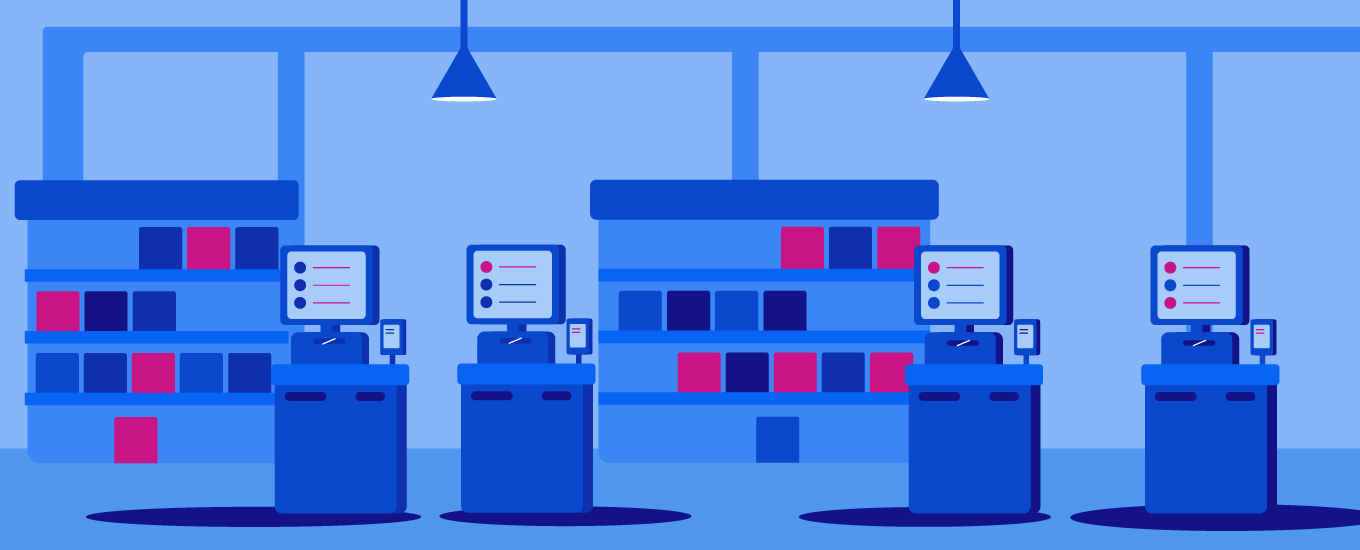Using Computer Vision to Fight Shrink and Protect the Customer Experience

Fighting shrink (store losses such as theft, damaged, or unopened inventory) is one of the most vexing problems facing retailers today. A National Retail Security Survey shows that total shrink reported by retailers is now almost a $100 billion problem. Retailers are increasingly relying on a form of AI known as computer vision to combat shrinkage through pattern recognition with full privacy inclusion.
On February 23, Centific conducted a fireside chat to dive into this topic. Centific industry experts Wayne Akoka, Abigail Hawkins, and Vasu Sundarababu shared insights about using computer vision to fight shrinkage and improve the customer experience in a conversation hosted by Centific’s Jerome Thiebauld. Here are some key take-aways from the lively 30-minute discussion:
- Shoplifters are getting the upper hand. Nearly everyone in a typical store on any given day simply wants to make a purchase. But the tiny fraction of people intent on committing a crime are becoming more sophisticated about how they steal. Techniques range from manipulating self-sheckout lanes to phony returns. As Abigail noted, by the time retailers marshal their resources to fight one form of theft, another one emerges to become an even bigger threat, which puts a strain on already limited resources.
- Cameras alone do not work. Stores typically rely on cameras to monitor customer behavior. But as Vasu observed, cameras simply record crime and help retailers identify theft after the fact. Cameras in and of themselves do not prevent theft.
- Computer vision can help retailers safeguard the store and protect the customer experience. According to the panelists, computer vision is a form of AI that makes it possible for computers to record visual data such as pictures and video. Computer vision gives store managers real-time insight into everything that is going on in a store to a level of detail that typical security cameras miss. It’s a smart technology that can observe and report more than even an ordinary security camera can, such as when a product has been removed from a shelf and what quantity. And proper training of cameras can decrease human bias clouding the process.
- Computer vision focuses on behaviors, not people. Panelists stressed that computer vision works by detecting unusual patterns in behavior that could indicate a safety threat. As Wayne noted, “When we use computer vision to help retailers, we are not identifying anyone. We are just tracking behavior anonymously. AI grades the pattern as a potential threat, not a person.”
- Computer vision needs people in the loop. Computer vision needs a retailer’s people at the store level to rapidly review unusual behavior in real time. Computer vision only flags the “what.” People need to review the data to decide whether, say, a customer simply needs help (perhaps someone is struggling to load a shopping cart with merchandise) versus a shoplifter who is attempting to steal something. This is how a retailer can safeguard stores and protect the customer experience at the same time. As Abigail noted, “Technology alone does not solve problems. You need well trained staff to ensure safety in the store. People absolutely need to be in the loop at all times.”
- Computer vision must be applied responsibly. Computer vision must be trained with data to know what patterns of behaviors to observe. It’s essential that a diverse team of people train computer vision models to guard against bias creeping into the model. Vasu said, “When Centific works with retailers to apply computer vision, we follow responsible AI guidelines laid out by the AI Council to avoid bias.”
- Retailers can demonstrate ROI by solving one problem at a time. Because of the myriad ways shoplifters operate, it can be difficult for a retailer to know where to start in using computer vision. The panelists suggested that retailers start by addressing one problem (e.g., self-checkout crime), demonstrate ROI, and build from there. As Wayne noted, “Achieving success at scale starts with fighting one problem, showing ROI, and then adding more tools to your tool kit. The key is to start small.”
- Fighting shrinkage at scale requires a platform. Retailers that fight shrinkage in multiple locations face a challenge: how to use computer vision cost effectively at each location. To do so, they need a centralized command center – a single platform – to scale an AI model beyond the store level. The three basic steps are to put AI on Edge devices, have it work on standard equipment, and then develop a command center. As Vasu noted, a single platform makes it possible to train computer vision properly with data that the application needs to do its job. When this is done, the total cost is a fraction of what it would be if a retailer tried to train computer vision models one store at a time.
The panelists also discussed how Centific applies computer vision as part of our Scout solution. Scout provides personalized and prescriptive analytics in real-time, intuitively alerting a store’s team to events before they escalate.
Scout's human-in-the-loop foundation mitigates bias through comprehensive AI training data sets and relies on Centific’s global team of risk mitigation experts for real-time situational analysis. This decreases the chance that computer vision will report false positives (or innocent behavior flagged as a problem). As Scout's knowledge of patterns grows, they are shared with users through an exclusive and secure pattern recognition network.
Whether it’s understanding a particular customer's behavior, detecting fraud at self-checkouts, or identifying on-premises hazards, Scout empowers retailers to act with confidence in real-time.
To learn more, Contact Centific.
For further reading:
